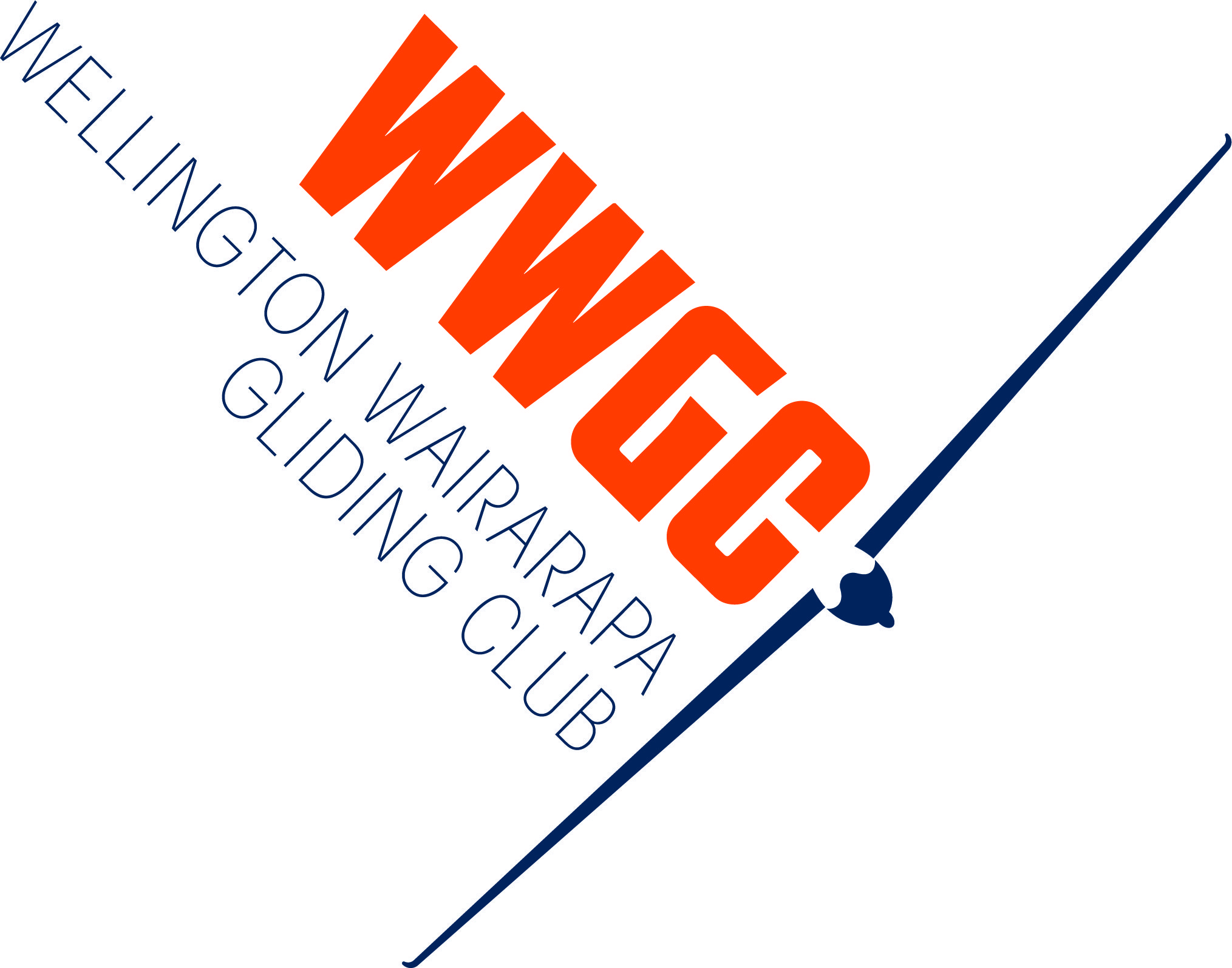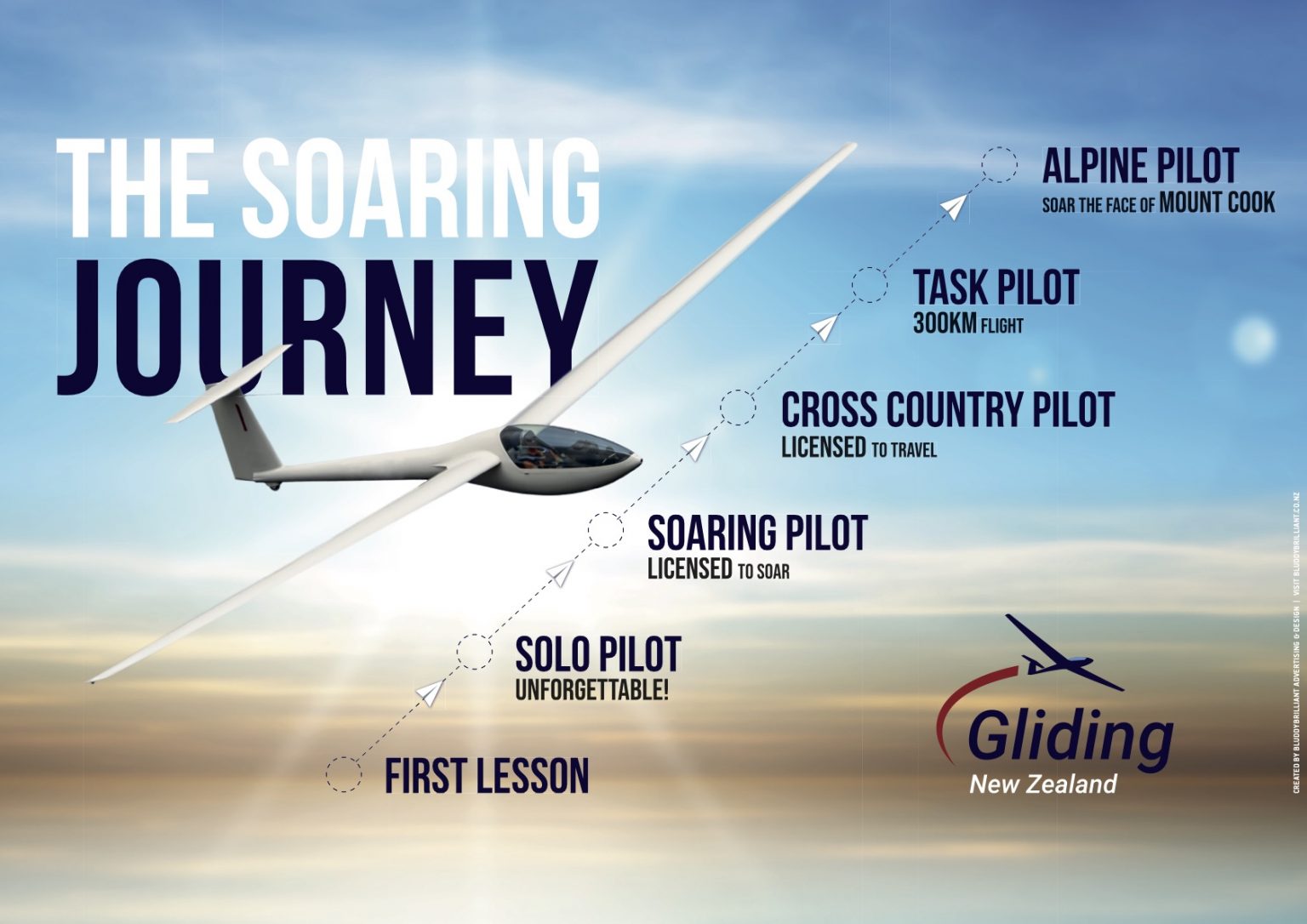Wellington Wairarapa Gliding Club

info for members
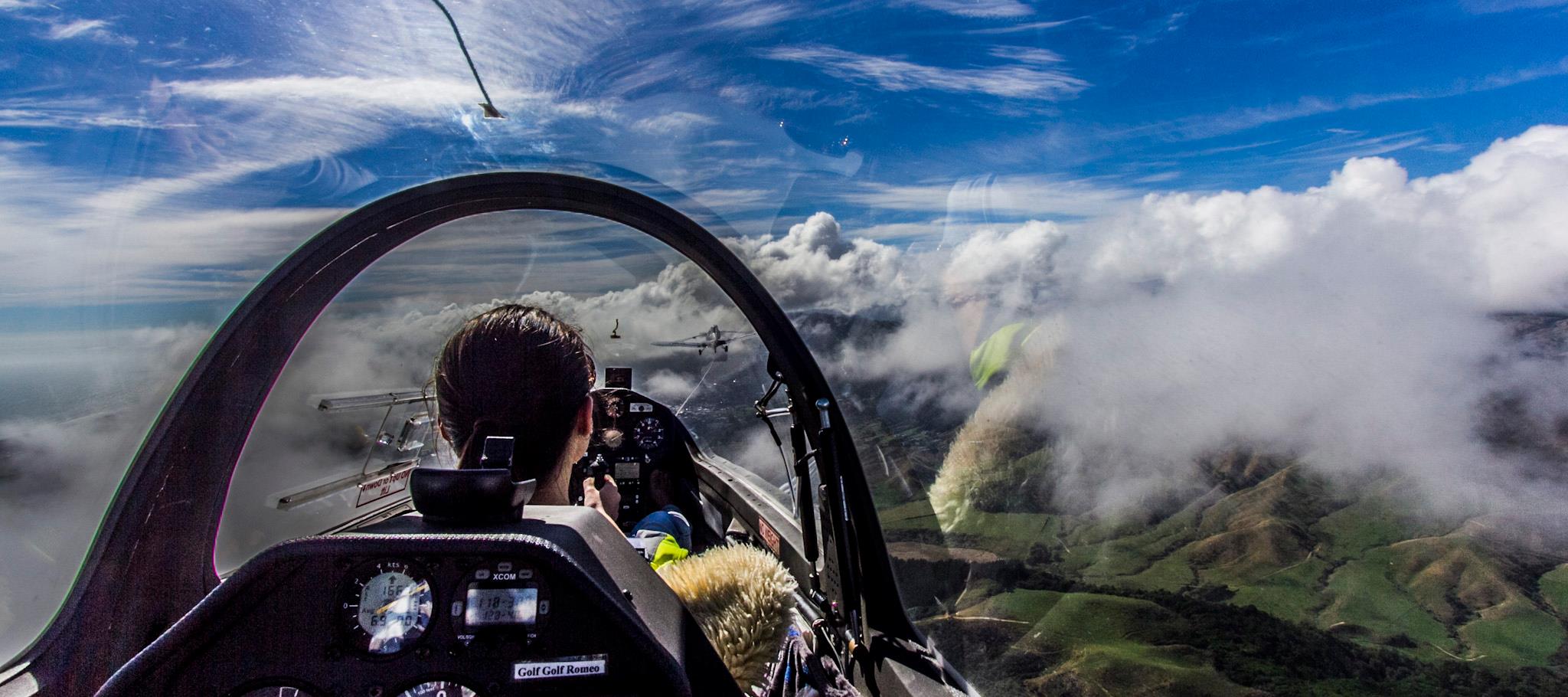
about being a member
A glider pilot needs help to get airborne, unlike a power pilot, where you can launch yourself. Helpers on the gliding airfield include a tow-plane pilot (or winch driver), a person to connect the launching cable and hold the wings level, and – usually – a third person to oversee the launching process. And if you land out you will need a crew to retrieve you in one of those long trailers.
Flight instruction is free – how good is that? You only need to pay for the cost of operating the glider you fly, the runway you launch from and land on, and the winch or tow plane to launch you. Instructors are all volunteers and give their time and expertise freely. We only ask that members contribute their own time and talent in the same way. There are plenty of ways to participate.
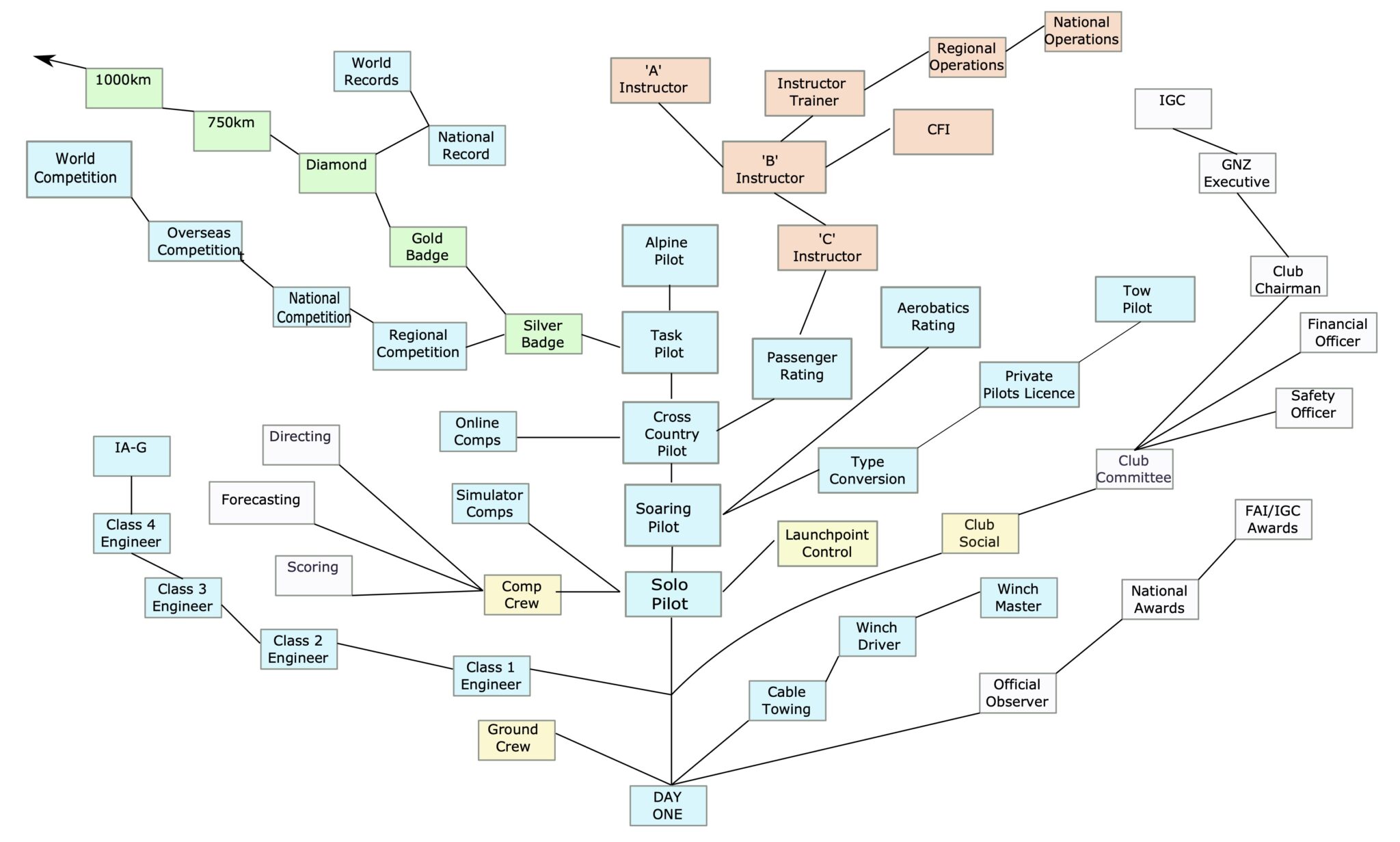
forms, fees and documents
Here you can apply for membership, access information about fees and charges, and review rules and policies that we have put in place to benefit everyone.
Papawai airfield
The gliding airfield is located in a quiet rural area just 3 km east of Greytown, alongside the confluence of the Ruamahanga and Waiohine rivers. Here is a view from the air, showing the two grass runways. The longer runway (03/21) is 2,000 metres long. A shorter runway 1,400 metres long (29) is used when launching into a north-west wind. This is the wind direction which can produce lee wave. Some parts of these runways are a little rough and not suitable for landing. Click here for a printable copy of the Airfield Ground Chart.
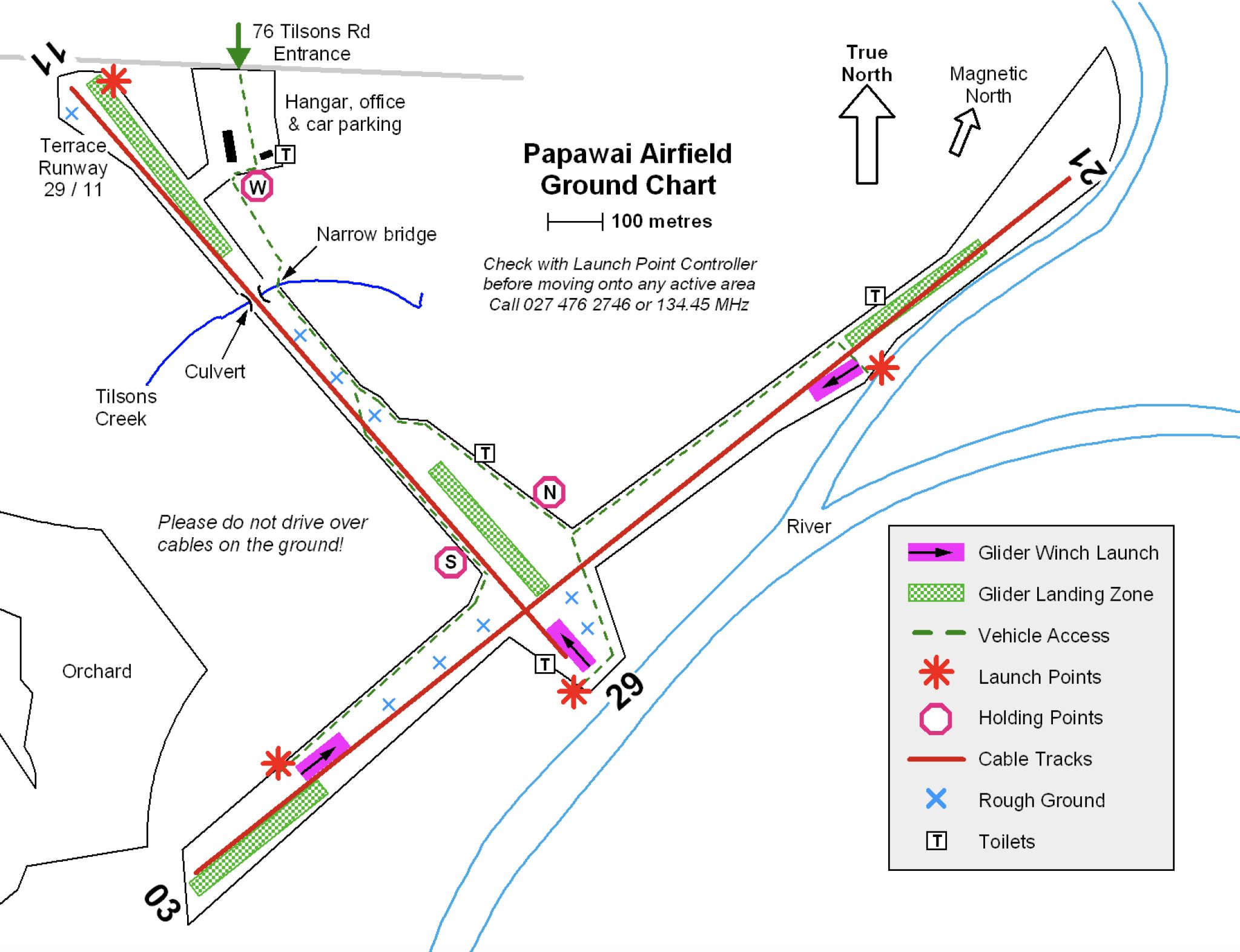
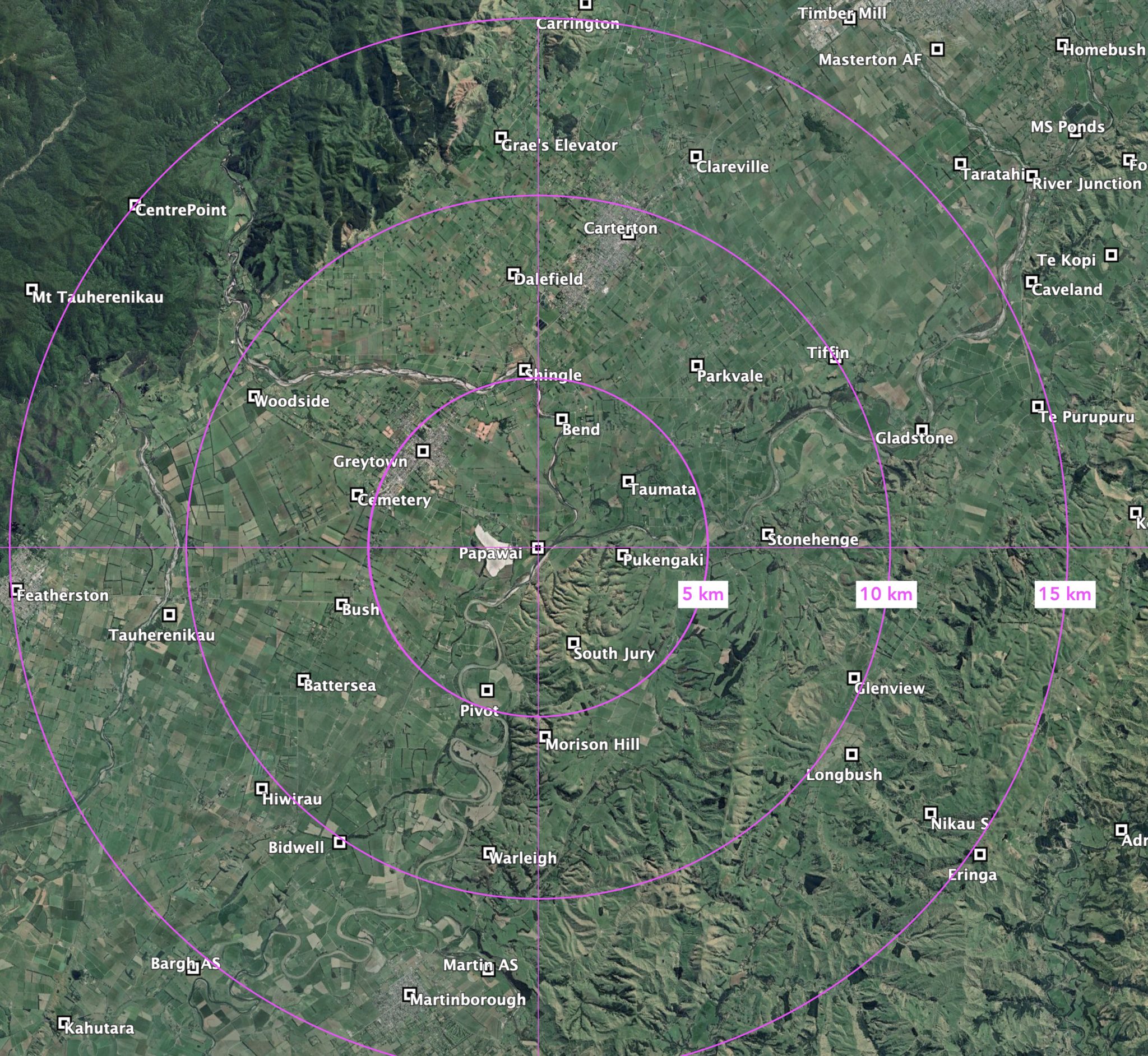
training program
Gliding New Zealand provides a comprehensive training program for prospective pilots. Click on the image below to link to the program. You will need to create an account to access, but don’t worry – you won’t be hassled with email adverts!
There are three milestones to reach the equivalent of a Private Pilot's Licence. To fly solo you will need to prepare the glider for flight, and demonstrate you can safely launch, fly and land. You will also need to learn about how and why aircraft fly.
The art of soaring requires further training. To climb the glider after launch, without using an engine, needs good ‘stick and rudder’ skills, because the glider needs to be flown accurately, perhaps in quite steep turns, or it simply won’t climb. You also learn how to find lift on any given day. The difficulty varies with the weather conditions – when the lift is strong then soaring is much easier.
The third milestone is reached when you have made a soaring flight between two points 50 kilometres apart. You finally qualify for your 'Cross-Country Pilot' (XCP) certificate, which is equivalent to a Private Pilot's Licence for gliders. Along the way you will show that you can select a suitable landing field from the air and then land in it. After which you will organise to have the glider dismantled and placed in its trailer for the return to base.
Plus you need to know where you are and how to navigate to a destination. You are trained to fly inside controlled airspace. There is a series of written exams to sit and pass; topics include aviation law, human factors and meteorology. You are well on your way.
weather forecasts
Gliding is very dependent upon suitable weather. We don’t fly in rain or cloud. Calm, sunny days are stable, but don’t produce much “lift”. Stable days are great for basic training. More experienced pilots are always on the lookout for days where there will be plenty of “lift” – so they can stay airborne. We use a number of forecasting tools to predict these days and plan our flights.
Papawai webcams gives a visual view of the sky – and ground activity – from our airfield. Snapshots are taken every few minutes, and you can scroll back several hours to see the comings and goings.
Windy.com is a free site which gives wind and rain forecasts for many days ahead. It’s great for learning about how wind flows around the terrain, where the jet stream is located, and how soon before it stops raining.
Metservice provides a general forecast for the Wairarapa area, with a brief description of sun, wind and rain for up to seven days ahead. Useful for a 'quick look'.
RASP is a free and gliding-specific site which gives detailed information for the soaring pilot, such as where lift is expected, how strong it will be, and the best time of day to launch. The site is sponsored by gliding organisations in NZ.
Skysight requires a subscription but is well worth it for the soaring pilot. It has easy-to-read graphics and will quickly give you a good grasp of soarable weather in the days ahead – including predicted wave or convergence.
Papawai weather publishes data from a weather station on our flying site at Papawai. This service is kindly provided by Mick Bancroft. Includes a rainfall gauge - useful for checking how wet the field is.
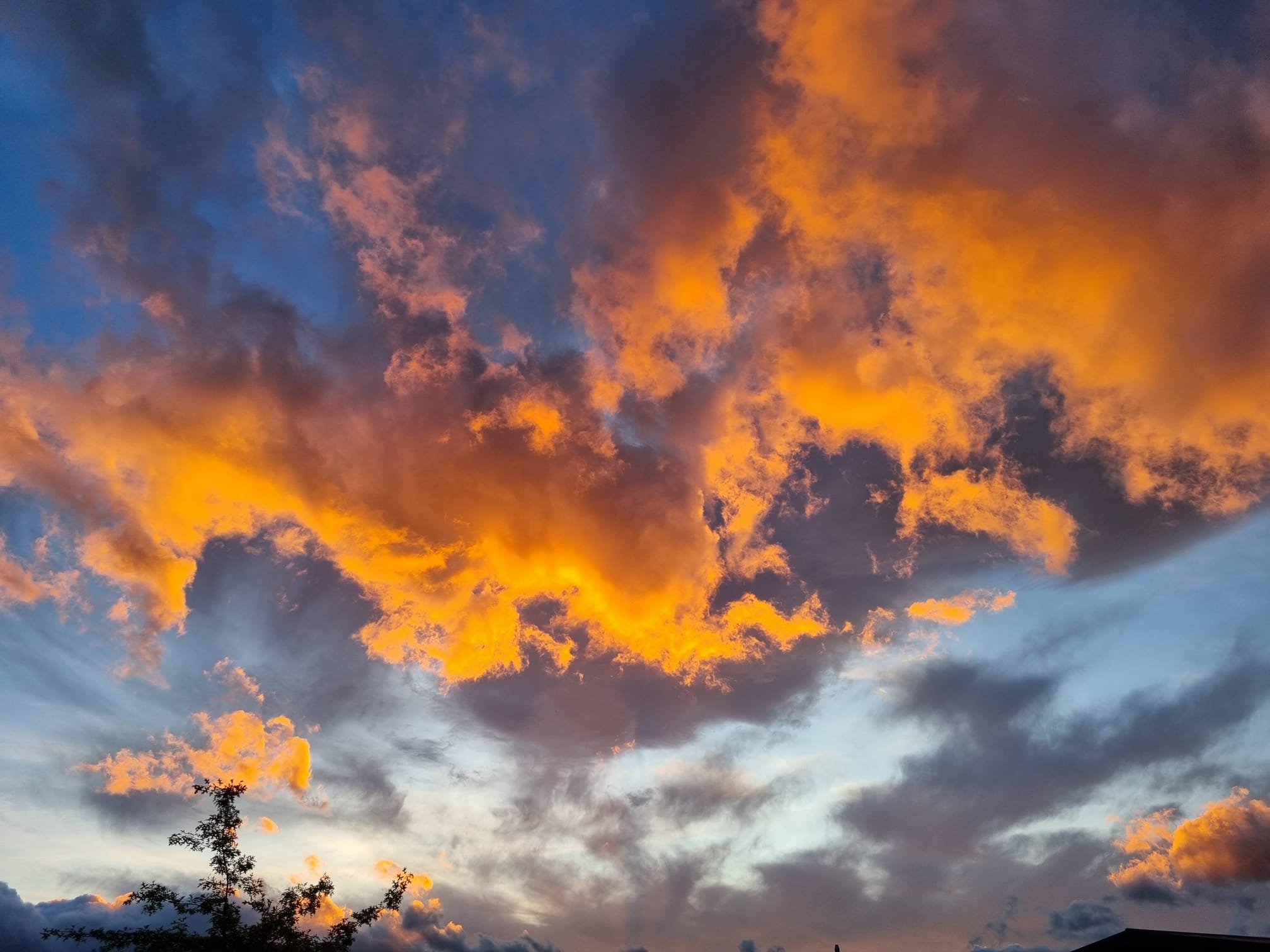
spectacular sky
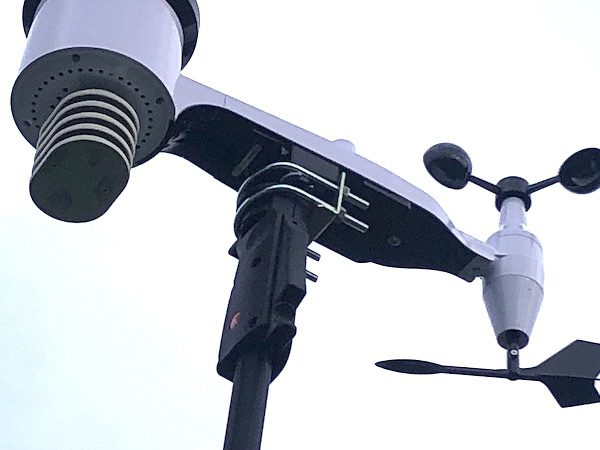
Mick's weather station
willing workers
The full title of this illustrious group is 'willing workers on winter workdays in the Wairarapa'.
Our airfield, aircraft and facilities are constantly being maintained and improved. A number of members are able to volunteer their time and expertise on weekdays. We have a lot of fun. Join us when you can.
Typical work involves pruning trees, mowing grass, clearing under fences, rolling the runways and generally keeping the airfield in good shape. We maintain the buildings and equipment, including the winch and the windsocks.
Plus we have all kinds of water-play. Our site lies alongside a river which occasionally floods, so a lot of attention gets paid to keeping the drains and creeks flowing smoothly. There is always plenty to do!
Members who are qualified glider engineers help to clean and inspect the gliders to keep them safe and working properly.
Most recently we have been filling the ruts left by the irrigator as it crosses our operational area. Thanks guys!
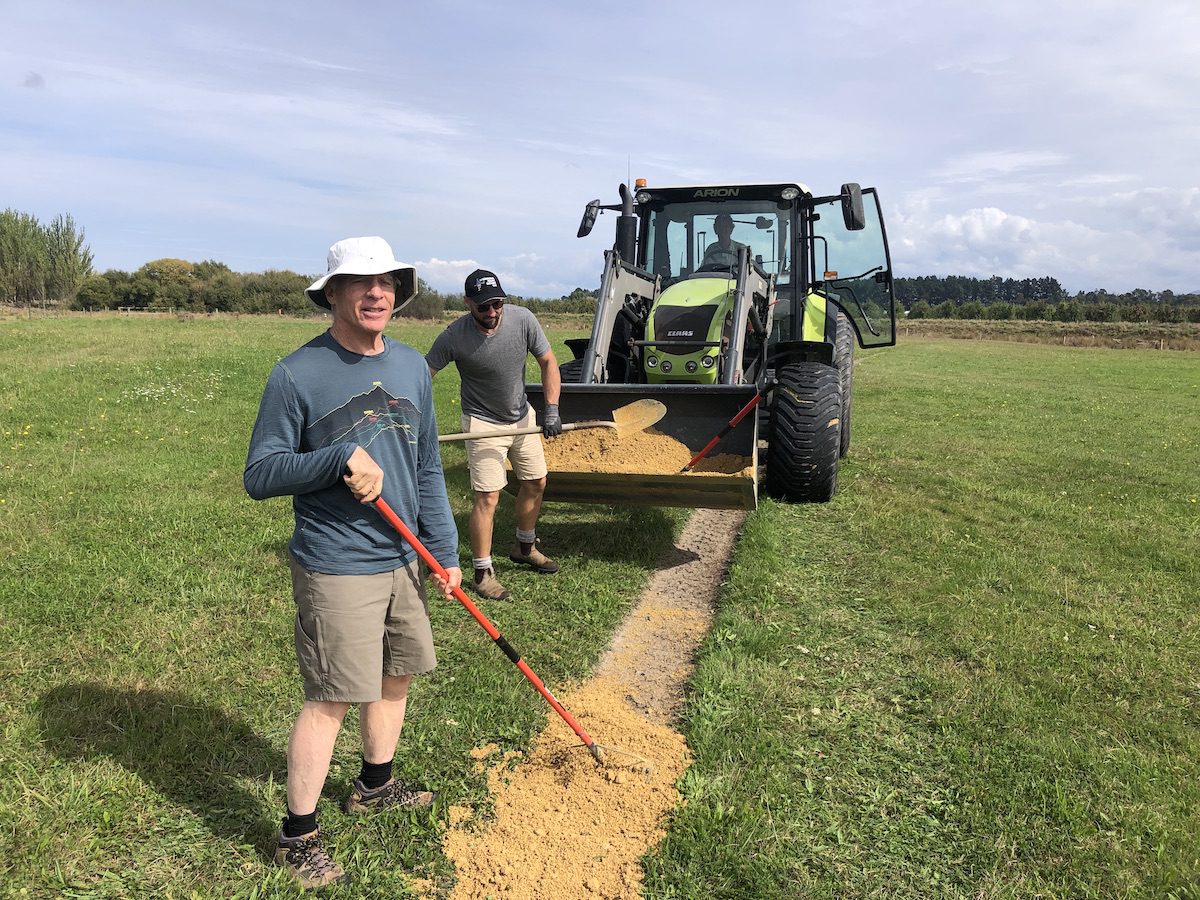
Warren and Dane on rake and shovel
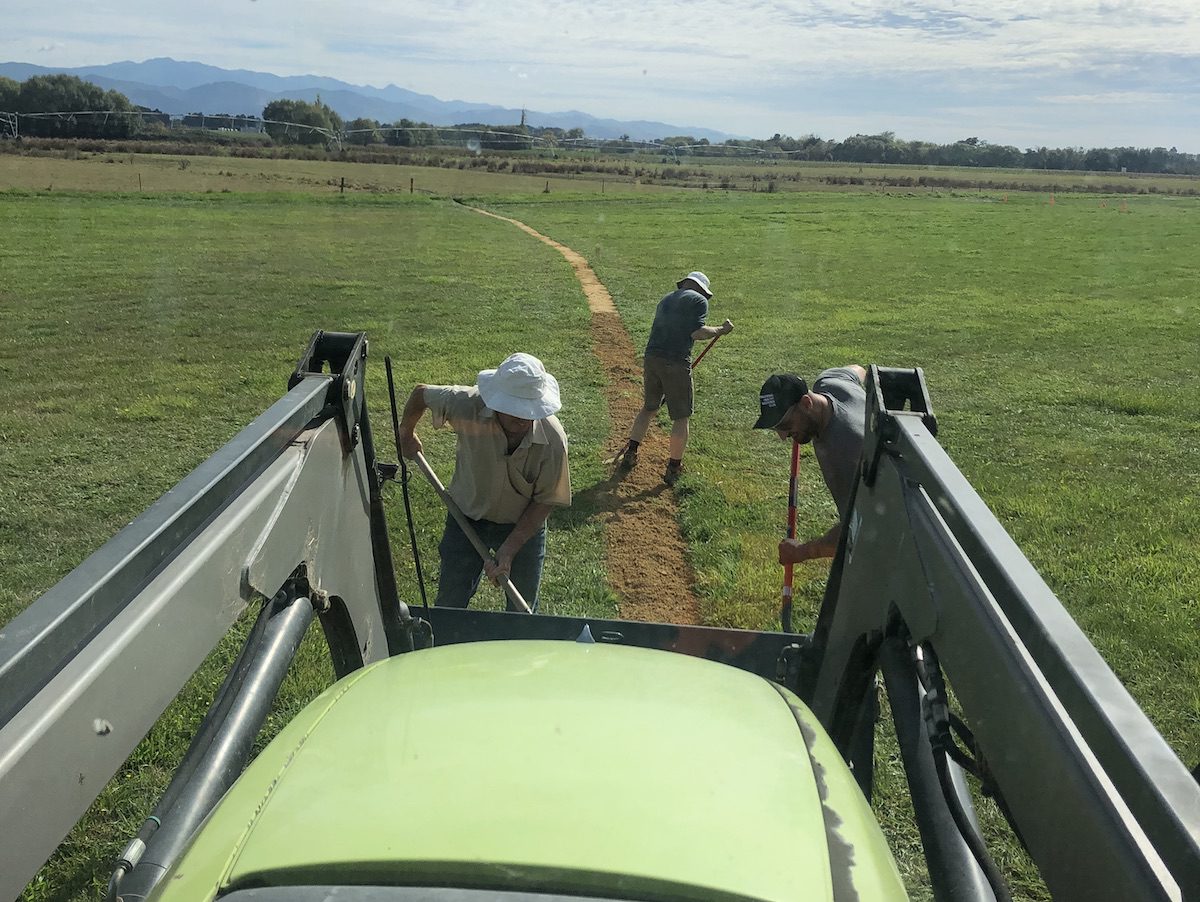
view from the easy seat
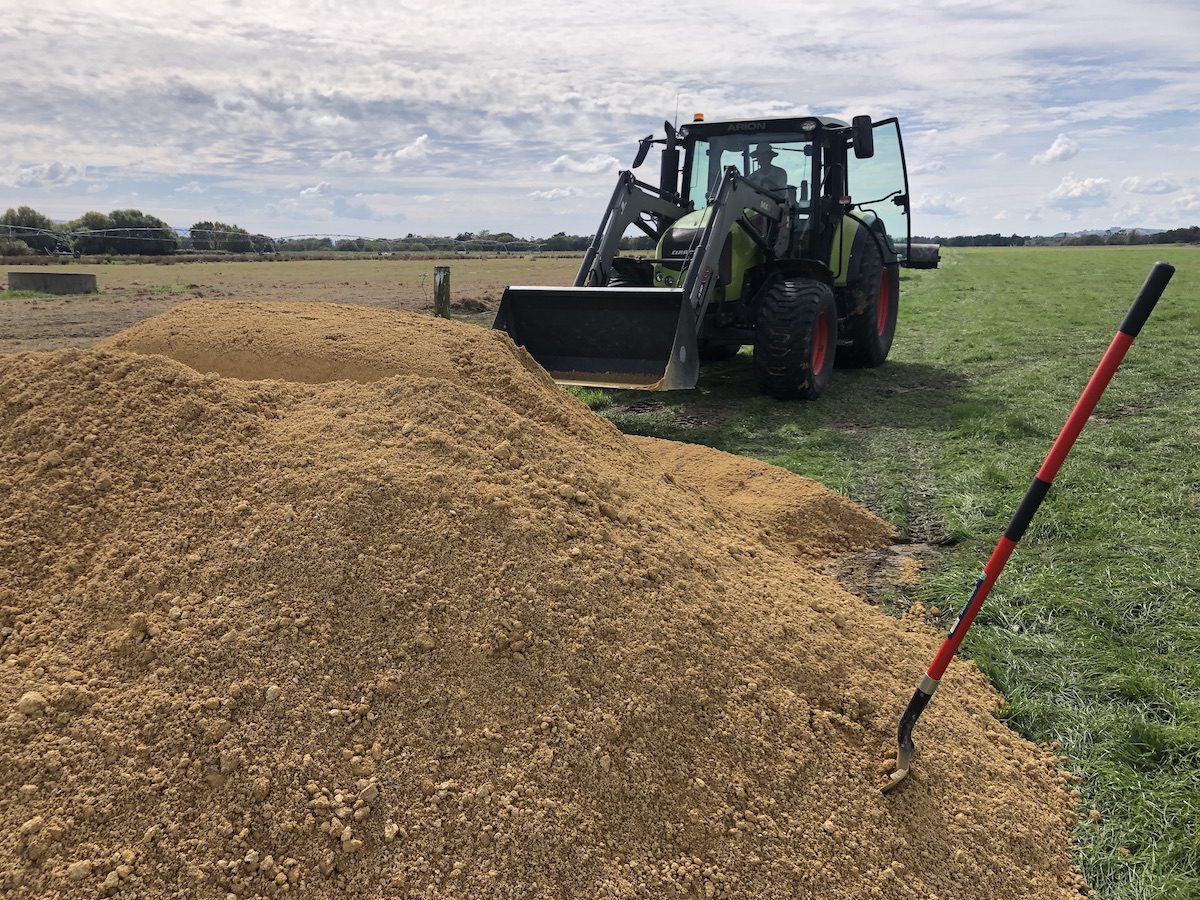
our source pile of crushed lime
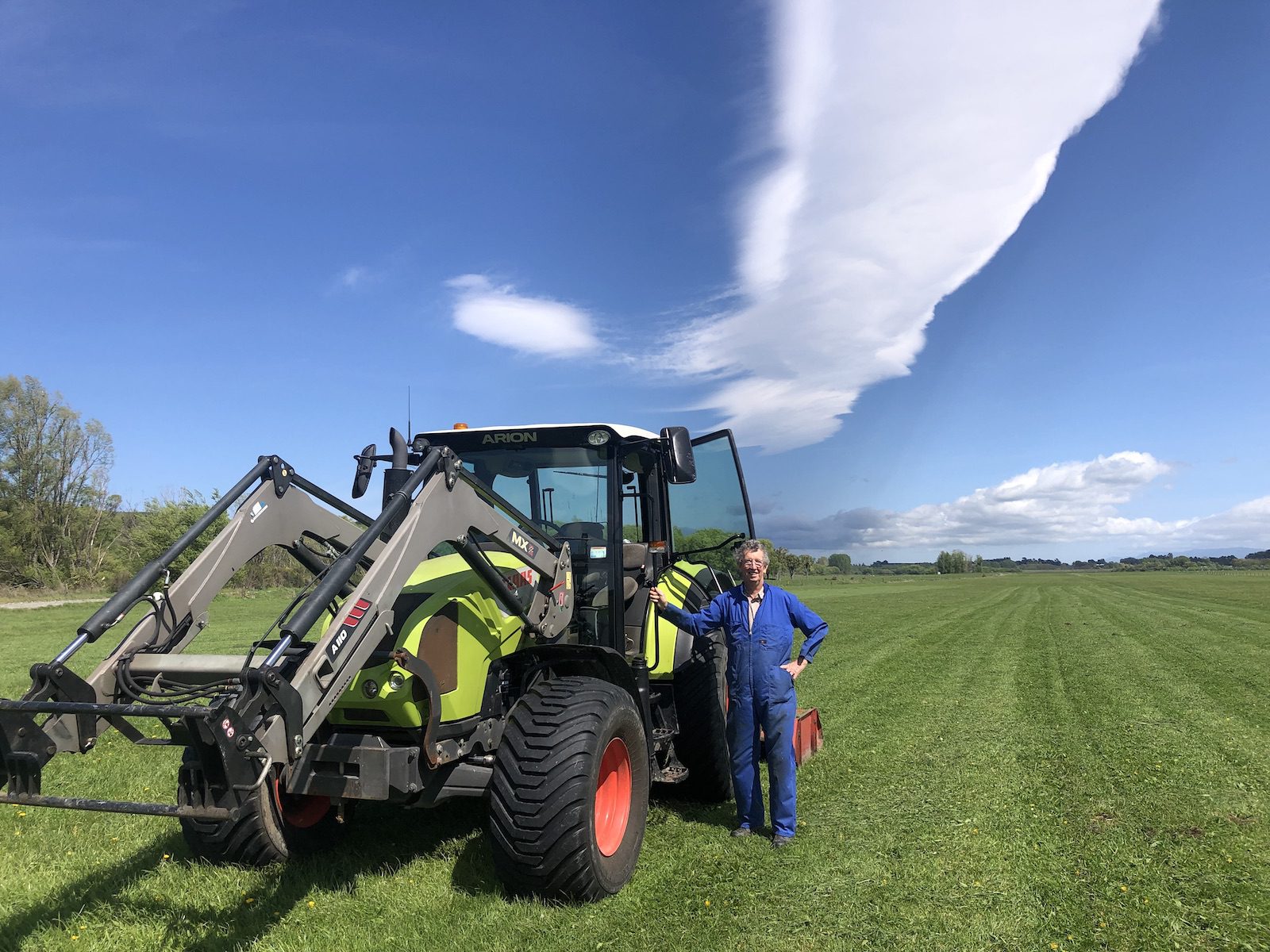
Tony mowing the runways
